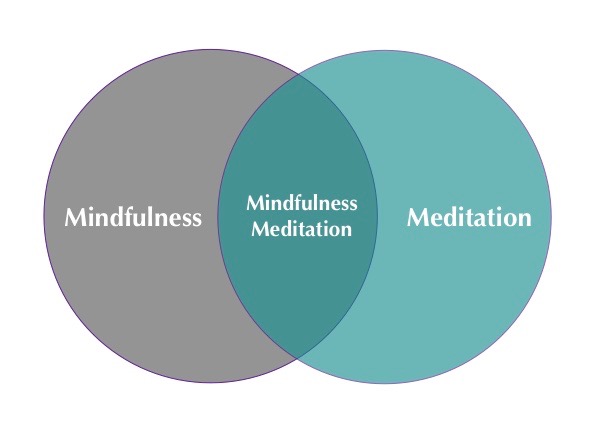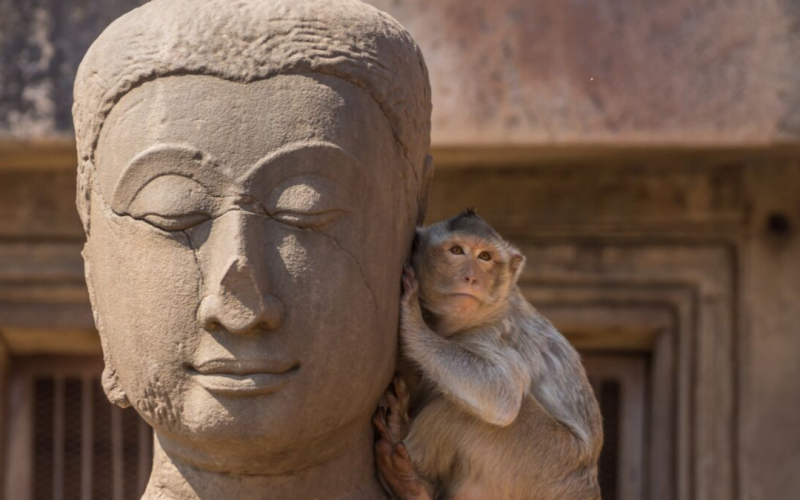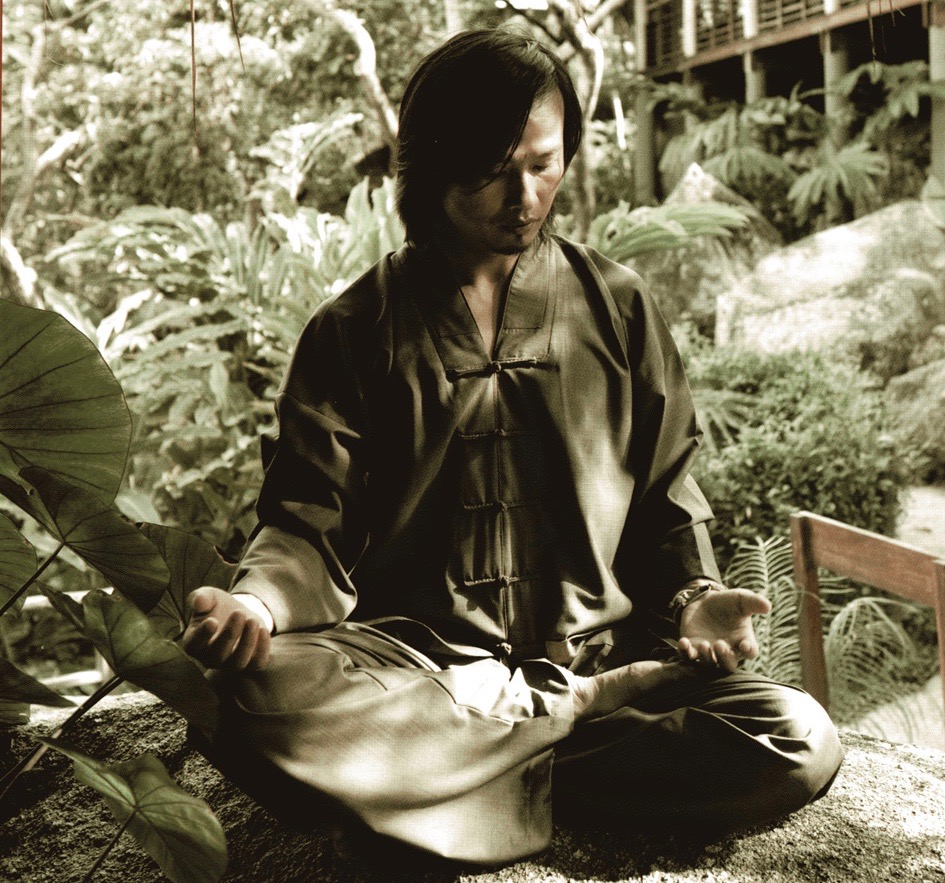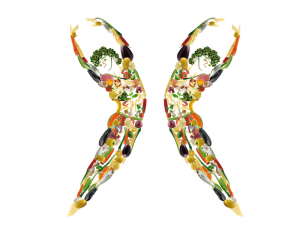Mindfulness and meditation are everywhere; it’s being offered as a cure-all for everything from IBS and low-self esteem to help pain management and depression. There is good science to confirm the benefits, and growing research shows that when people train to be more mindful, they are rewiring the physical structure of their brain, but what are they exactly?
Mindfulness and meditation are the subject of much interpretation and debate but very often overlap and complement each other in their practice. Many scholars consider meditation and mindfulness to be two sides of the same coin, both rooted in ancient Buddhism, but each has its specific definition and purpose.

Meditation is a broad umbrella term that encompasses the practice of reaching ultimate consciousness and concentration, to acknowledge the mind and self-regulate it. More simply it allows us time and space to explore the workings of our sensations, our emotions and thoughts without judgment but with curiosity and kindness to ourselves and others. There are lots of practices and techniques to reach this heightened level of consciousness including compassion, love, patience, and the mindfulness.
According to Jon Kabat-Zinn, PhD, who has studied mindfulness for over 35 years, mindfulness is a form of meditation defined as the ability to be fully present of where we are and what we’re doing, but not be overly reactive or overwhelmed by what’s going on around us. For example, focusing on the daily task of brushing one’s teeth; taking in the smell and taste of the toothpaste, the sensation of the brush as it contacts our teeth, the vibrations on our gums, the sound if you use an electric brush, etc.
Mindfulness and meditation are great tools to transform the mind and build resilience. While mindfulness is something we all naturally do, for example, daydreaming or drifting off looking out of a train window, it’s more beneficial if we make time to practice daily. While most people would like to insure themselves against many of the challenges of life, ward off or reduce anxiety, prevent stress, some struggle with the traditional ways to practice. What if you can’t sit comfortably or don’t have 20-30 minutes a day? Or believe being seated on a cushion is just not for you? Are they other ways to calm the monkey mind of modern life, develop emotional resilience, and as a bonus make our brains smarter.
If mindfulness is a mental training practice that involves focusing our mind on our internal experiences (emotions, thoughts, and sensations) in the present moment surely, we could do that anywhere. A breathing practice, using imagery (focused daydreaming), bringing awareness to a body part or muscle or with a body scan relaxation. Listed below are some other options and techniques to explore.
If sitting is the issue
Try standing meditation which has the bonus of decompressing the spine, and can relieve lower back pain and promotes stability. There are lots of moments in our daily life while we have to wait; for the kettle to boil, the microwave to ping, washing machine door to open after the cycle stops. Tip; Start slowly with a few minutes at a time.
If lack of time is the problem
Try walking meditation, traditionally this is usually performed slowly and continuously while staying aware of the body and mind. In reality turning up your internal focus and quietly noticing how each foot strikes the ground, how the breath enters and leaves the body can offer similar results.

If traditional mediation puts you off
Breathing Meditation:
A longer out breathes a calming influence on the body while lengthened in breath can be energising. This is the easiest mediation skill to learn and slot into a busy life, it can be done anywhere, all you need a few minutes and little focus.
Gazing Meditation
Instinctively, we have looked at objects to help us unwind or relax since human existed. For example, watching the flickering flame of fire. We can encourage an inward internal focus by gazing at a fixed object, the flame of a candle or a natural object like a pebble or tree.

Hand movement meditation
Traditional meditation requires stillness which can be a challenge for many people especially beginners. Hand movement meditation uses simple rhythmical movements of the hand, wrist, and fingers to aid the meditation process.
If mediation is just not for you, try a mindful movement class.
Tai Chi or Qigong
These contemplative low-impact slow-motion exercise practices are forms of moving meditation, proven to reduce stress and anxiety, improve blood flow, and increase energy.

Pilates
Some people find the principle of Pilates including concentration, coordination, specific breathing patterns can quieten the mind while reducing stress.
Dance
Whether is a little mama, or daddy dancing, shaking your leg, or boogieing around the kitchen, dancing frees people to let go of their ego and surrender to the rhythms, it can be a great way to release tension too.
Summary
Mindfulness and meditation can be more than just sitting crossed-legged in the lotus position. One of the above alternative options may offer a way forward for you to gain its proven benefits.
As a suggestion try one or two to find the best fit for you and importantly try to stick to a routine for a few weeks to reap the benefits.
There are lots of Apps that can help too, many offer free trial periods to get you started.









